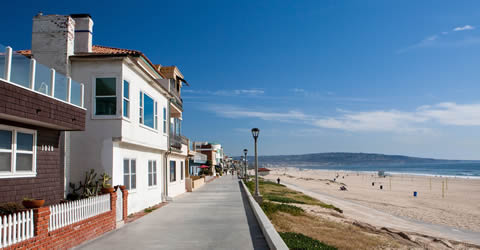
There are many options for drug treatment. We can help you find the right one.
Drug Rehab Kentucky
Drug addiction problems in Kentucky have steadily become worse over the last several years; thus increasing the demand for a greater number of quality drug rehab programs in the state. Individuals in Kentucky may be disappointed with the limited number of quality drug rehab options that are available for the treatment of drug addiction. What most people do not realize, is how important it is to put into place a drug treatment program at the slightest indication of a drug addiction. A sense of urgency is necessary because the longer it takes to set a drug rehabilitation plan into motion, the more time the addict has to minimize their drug addiction and change their mind about agreeing to receive the support of a drug rehab program. In choosing a Kentucky drug rehab, it is important to choose a treatment facility that has a history of a high rate of success in formerly treating drug addiction. Do not shy away from asking the important questions in regard to the drug rehab facility. The most important goal of a Kentucky drug rehab center should be to support the individual in overcoming their substance abuse problem by developing a personalized treatment plan in order to successfully treat their individual drug addiction. There are so many different types of Kentucky drug rehab options that are available, including short term, long term, inpatient or outpatient. Additionally, there are various ways that each center may administer the components of treatment that are utilized in order to successfully treat the drug addiction.
Often, by the time an individual is ready to accept the help from a drug rehab facility, the drug addiction has already costs them a lot; they may have lost a lot of the things that once meant so much to them. These losses can include their job and the destruction of many of their personal relationships. The cost to the workplace in the state of Kentucky in terms of lost productivity and accidents is rapidly increasing due to drug addiction. The number of automobile accidents that are directly linked to the use of alcohol and other drugs has also skyrocketed. Drug related crimes in Kentucky are on the rise too, as is also the case in a majority of the states in this country today. For these reasons, the need for quality drug rehabilitation in Kentucky is more obvious than ever before. Individuals who suffer from a drug addiction can experience various health problems as a result of their substance abuse problem. Many times, only after an addict has lost almost everything due to the drug addiction, will they accept the professional assistance of a Kentucky drug rehab program.
Most people in Kentucky do not have much of a chance of overcoming their drug addiction, without the professional support of a drug rehabilitation facility. The first thing that an individual has to do to be free from a drug addiction is to go through the detox portion of the drug rehab program. In the detoxification process, they will have to experience the discomfort of drug withdrawal symptoms; this is where the support and assistance of professionals at a drug rehab facility is most necessary; the staff can help to alleviate some of these uncomfortable symptoms, which in turn will aid the individual in successfully completing this important component of the treatment program. After the completion of the detox process in a drug rehab program, they can move forward to complete the other phases of treatment in order to successfully overcome their drug addiction. Many individuals who have gone through the drug rehabilitation process to treat their drug addiction have noted that although it is not an easy process, that it is an extremely rewarding one.
- Club drugs such as LSD, MDMA (ecstasy) and GHB can be found in Kentucky. The availability of ecstasy seems to be increasing in the state, while the use of LSD and GHB has decreased slightly due to the limited availability.
- In the state of Kentucky, the number one cash crop is domestically grown marijuana. Much of the marijuana that is grown in the state is being grown on national forest land. Marijuana is by far the biggest drug threat in Kentucky, often being sold in parking lots, bars, store fronts, and homes.
- The in-state production of methamphetamine has increasingly become a significant issue in the state of Kentucky. Meth use among the teenage population is slightly higher in Kentucky (12.7%) than the national average in the U.S. (9.1%).
- The use of heroin is very limited in the state of Kansas, and when the drug is encountered, it is generally found in user amounts.
- Cocaine is readily available in Kentucky, particularly in the metropolitan areas of the state. The abuse of cocaine is so widespread in Kentucky that it can easily be obtained as various locations throughout the state.
- Several counties in the eastern portion of the state of Kentucky lead the nation in terms of grams of narcotics that are distributed on a per capita basis.
- The manufacturing of methamphetamine in Kentucky mainly consists of small and unsophisticated clandestine labs that produce limited amounts of the drug, this activity is predicted to rapidly increase in the state in the near future.
- Much of the marijuana that is grown in the state of Kentucky is cultivated at the Daniel Boone National Forest.
- Meth, marijuana, cocaine and diverted pharmaceutical drugs are the primary drug threats in Kentucky.
- Cocaine is the primary drug that is seized in the state of Kentucky.
Drug addiction in the state of Kentucky is a serious problem. The answer to this problem is to locate a drug rehab program with a proven track record in successfully treating drug or alcohol addiction.
Treatment Centers by City
Select a City:
- Louisville
- Lexington
- Bowling Green
- Owensboro
- Paducah
- Frankfort
- Richmond
- Covington
- Florence
- Ashland
- Hopkinsville
- Fort Mitchell
- Elizabethtown
- Henderson
- Newport
- London
- Somerset
- Winchester
- Nicholasville
- Georgetown
- Glasgow
- Corbin
- Murray
- Shepherdsville
- Madisonville
- Radcliff
- Pikeville
- Bardstown
- Danville
- Mayfield
- Campbellsville
- Shelbyville
- Latonia
- Manchester
- Versailles
- Morehead
- Harrodsburg
- Benton
- Lawrenceburg
- Monticello
- La Grange
- Williamsburg
- Mount Sterling
- Paris
- Hazard
- Franklin
- Cynthiana
- Leitchfield
- Russellville
- Scottsville
- Columbia
- Middlesboro
- Irvine
- Maysville
- Mount Washington
- Grayson
- Salyersville
- Jackson
- Prestonsburg
- Lancaster
- Cadiz
- Lebanon
- Stanford
- Louisa
- Pineville
- Greenville
- West Liberty
- Central City
- Barbourville
- Greenup
- Morgantown
- Taylorsville
- Brandenburg
- Liberty
- Mount Vernon
- Albany
- Greensburg
- Tompkinsville
- Morganfield
- Vanceburg
- Beaver Dam
- Springfield
- Stanton
- Beattyville
- Paintsville
- Edmonton
- Carrollton
- Falmouth
- Flemingsburg
- Owenton
- Carlisle
- Williamstown
- Bellevue
- Owingsville
- Hartford
- Harlan
- Campton
- Cave City
- Hardinsburg
- Eddyville
- Inez
- Munfordville
- Jamestown
- Brownsville
- Whitley City
- Providence
- Hawesville
- Brooksville
- Warsaw
- Sandy Hook
- Belfry
- Hyden
- Frenchburg
- Bronston
- Rush
- Martin
- California
- Willisburg
- Salem
- Mayking
- Ashcamp
- South Williamson
- Buckhorn
- Emmalena
- Pine Ridge
- Hope
- Pittsburg
Questions? Need Help?
Call now to speak with an addiction treatment specialist who can help you find the best rehab program that fits your personal situation.
Residential • Detox • Inpatient • Outpatient • Short Term • Long Term • Low cost • Insurance • Executive • Private
(866) 577-1704
Kentucky Drug Information and Drug Trafficking
The main drug threats in Kentucky are marijuana, meth, diverted pharmaceutical drugs, and cocaine. The eastern Kentucky region in particular has been a primary source of marijuana cultivation, especially the Daniel Boone National Forest. In 2003, 522,957 marijuana plants were eradicated in Kentucky, according to the Domestic Cannabis Eradication/Suppression Program. Though Kentucky is the site of large-scale marijuana cultivation, most of the marijuana produced in the state is exported to markets in other states, including Illinois, Ohio, New York, California, Texas, Pennsylvania and Washington D.C.
Today, meth is a dramatically increasing threat throughout Kentucky. Law enforcement authorities in Kentucky see this as an "exploding" trend much the same as crack cocaine several years ago. Though methamphetamine manufacturing activity in Kentucky consists mostly of small, unsophisticated clandestine laboratories producing limited amounts of methamphetamine, this activity is expected to expand rapidly in the near future in terms of both the number of labs and their size/sophistication.
Kentucky drug information shows that after marijuana, cocaine is the primary drug seized in Kentucky. The limited competition in remote areas makes the small communities of eastern Kentucky immensely popular and profitable for cocaine trafficking organizations from major metropolitan areas. Additionally, urban areas such as Lexington and Louisville are used as drug trafficking transshipment points for cocaine en route from the southwest border to markets in the northeastern United States.
Lastly, several counties in eastern Kentucky lead the nation in terms of grams of narcotic pain medications distributed on a per capita basis. Aside from marijuana cultivation and trafficking, the trafficking and illicit usage of prescription drugs in the area may be the most significant current drug threat facing the residents of eastern Kentucky.
Cocaine HCl is readily available throughout Kentucky, with the greatest availability in the densely populated areas where quantities remain stable. Major traffickers are of African American, Hispanic, and Colombian ethnic backgrounds. Cocaine destined for the state of Kentucky originates from source areas such as the southwest border of the U.S. and southern Florida.
The price and purity of cocaine has remained relatively stable in Kentucky for the past several years. Gram quantities continue to sell between $100-$150, ounce quantities between $900-$1,200, and kilograms between $20,000-$28,000. The cocaine in urban areas is consistently purchased and seized in the 40 to 90 percent purity range.
One drug that is extremely rare in Kentucky is heroin. When encountered, heroin is usually found in user amounts and sources are in either Cincinnati or Detroit.
Meth continues to be available in Kentucky, especially in the rural areas of the state. Kentucky methamphetamine production is a simple process taught among violators and dominated by Caucasians in the lower social and economic classes, including former marijuana cultivators, who are beginning to realize the greater profit margin and diminished threat from law enforcement posed by methamphetamine production versus marijuana cultivation.
Mexican violators are increasingly replacing local manufacturers as the primary suppliers of methamphetamine in rural Kentucky. As they had done in Tennessee, Mexican organizations first infiltrate the market by offering high-quality methamphetamine at low prices, amassing a large customer base that comes to prefer the superior product they offer over locally produced "hillbilly meth." Once the customer base is firmly established, they raise prices. This process is currently underway in rural Kentucky.
The illicit use of prescription drugs throughout Kentucky is perhaps one of the most underestimated drug problems. During 2003, 19,366 dosage units of diverted pharmaceutical drugs were seized by HIDTA-participating agencies in Kentucky. Nevertheless, this seizure rate does not indicate fully the seriousness of the impact of the illicit use and trafficking of prescription drugs in the area. Counties in eastern Kentucky lead the nation in terms of grams of narcotic pain medications distributed on a per capita basis.
Aside from marijuana cultivation and trafficking, the trafficking and illicit usage of prescription drugs in the area may be the most significant current drug threat within the Appalachia HIDTA. Investigative agencies in Kentucky target physicians who prescribe medication to abusers who "doctor shop." These physicians often overcharge the Medicare and Medicaid programs as well as private insurance agencies. The "patients" sell the controlled substances on the street for enormous profits, and abuse the substances themselves.
The abuse and trafficking of diverted pharmaceutical drugs profoundly affects nearly all facets of life for residents of eastern Kentucky, including local politics. The large demand for these substances, combined with the vast profit potential offered by illicit drug distribution, has led to significant political corruption and voting fraud at the county and city levels. "What it takes to get the attention of some voters now is no longer a case of beer or $10 or $15. Now it's a handful of OxyContin," says Lori Daniel, an Assistant Commonwealth's Attorney.
In Kentucky, between January 2000 and May 2001, the Kentucky State Medical Examiner's (ME's) Office identified the presence of oxycodone in the bodies of 69 individuals who died. Toxic oxycodone levels were reported in 36 of the 69 deaths.According to the U.S. Substance Abuse and Mental Health Services Administration, 1.4 percent of admissions to U.S. drug treatment facilities in 1999 resulted from the abuse of "other opiates," i.e., narcotic drugs other than heroin.
Drug information sources in Kentucky reveal that LSD, MDMA, and GHB are all available in the Lexington area. The availability of MDMA seems to be increasing, while the availability of LSD and GHB have remained static or decreased slightly. The source area for MDMA in the Lexington area has been identified as Florida. The source area for LSD is California, and GHB is manufactured locally.
The Lexington Regional Office (RO) has a Priority Target Investigation involving two groups who distribute thousands of dosage units of MDMA per month in the Lexington area. The Lexington RO has made several undercover purchases from members of these organizations and has arrested four individuals thus far. Sales have been taking place at rave parties, nightclubs, bars, and hangouts for high school-aged individuals.
It may surprise you that Kentucky averages third or fourth in terms of total marijuana production, after California, Hawaii, and sometimes Tennessee. The Daniel Boone National Forest, which covers more than 690,000 acres of eastern Kentucky, is a favored site for cultivators. The forestlands are remote, sparsely populated, very accessible, and fall within what is known as the "marijuana belt," so-named due to ideal soil and climate conditions for cannabis cultivation.
Along with growing conditions, the National Forest, as a result of its timber practices, has opened a canopy for new marijuana growth in numerous areas where the sunlight penetrates the forest floor. As a result, marijuana plots in the National Forest are found in various locations from bottomlands, on hillsides, and to the tops of mountains, with the regeneration areas being an especially popular spot for growers.
Marijuana growers also perceive the vast rural areas of the National Forest as too spacious for law enforcement officials to detect most of their activities. Aside from ideal locations for marijuana plots, growers often plant their crops on public lands, such as National Forests, in an effort to draw greater protection from personal and/or financial loss due to asset forfeiture procedures, should they be apprehended. Overall, 206,908 marijuana plants were eradicated the Daniel Boone National Forest in 2003.
Ashland, KY. 41101
Lexington, KY. 40517
Paducah, KY. 42001
Columbia, KY. 42728
Covington, KY. 41011
Paintsville, KY. 41240
Hazard, KY. 41701
Louisville, KY. 40242
Louisa, KY. 41230
Hartford, KY. 42347
Mayfield, KY. 42066
Harrodsburg, KY. 40330
Hardinsburg, KY. 40143
Danville, KY. 40422
Hopkinsville, KY. 42240
Richmond, KY. 40475
Willisburg, KY. 40078
Elizabethtown, KY. 42701
Somerset, KY. 42501
Frankfort, KY. 40601
Florence, KY. 41042
Bowling Green, KY. 42103
Prestonsburg, KY. 41653
Madisonville, KY. 42431
Nicholasville, KY. 40356
Latonia, KY. 41015
Stanford, KY. 40484
South Williamson, KY. 41503
Versailles, KY. 40383
Campbellsville, KY. 42718
Campton, KY. 41301
Lebanon, KY. 40033
Morgantown, KY. 42261
Morganfield, KY. 42437
Ashcamp, KY. 41512
Owensboro, KY. 42301
Benton, KY. 42025
Radcliff, KY. 40160
Corbin, KY. 40701
Pikeville, KY. 41501
Central City, KY. 42330
Georgetown, KY. 40324
Mount Sterling, KY. 40353
Providence, KY. 42450
Morehead, KY. 40351
Leitchfield, KY. 42754
Bellevue, KY. 41073
Tompkinsville, KY. 42167
Franklin, KY. 42134
Shepherdsville, KY. 40165
California, KY. 41007
Carrollton, KY. 41008
Glasgow, KY. 42141
La Grange, KY. 40031
Cynthiana, KY. 41031
Henderson, KY. 42420
Maysville, KY. 41056
Jamestown, KY. 42629
Fort Mitchell, KY. 41017
Mount Washington, KY. 40047
Scottsville, KY. 42164
Bardstown, KY. 40004
Cadiz, KY. 42211
Buckhorn, KY. 41721
Mount Vernon, KY. 40456
Barbourville, KY. 40906
Paris, KY. 40361
Rush, KY. 41168
Whitley City, KY. 42653
Newport, KY. 41071
Bronston, KY. 42518
London, KY. 40744
Albany, KY. 42602
Brownsville, KY. 42210
Beaver Dam, KY. 42320
Russellville, KY. 42276
Irvine, KY. 40336
Pineville, KY. 40977
Hope, KY. 40334
Hawesville, KY. 42348
Lancaster, KY. 40444
Salem, KY. 42078

